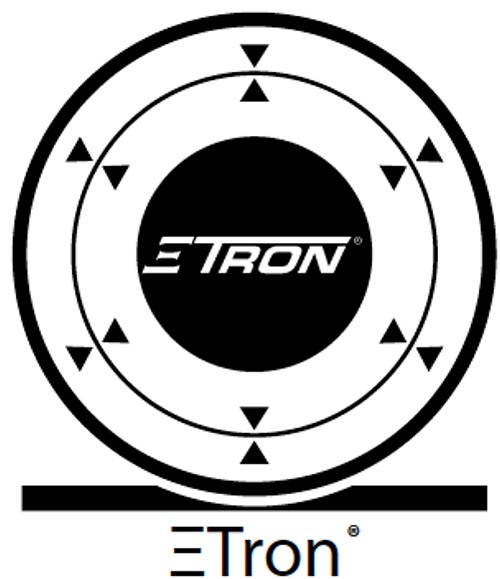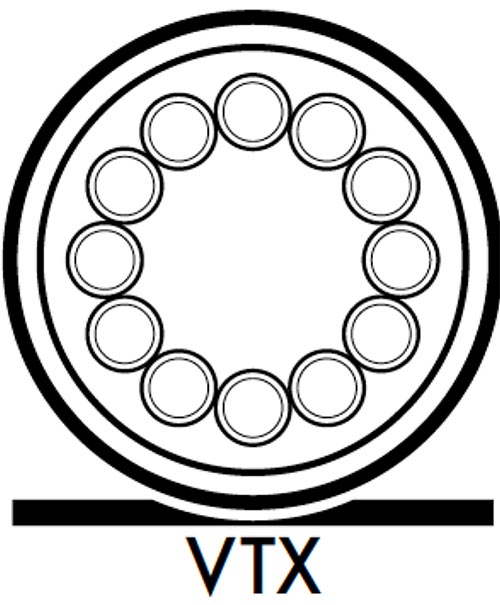Of all the products within Shunyata Research's iconic portfolio, none have benefitted from the innovation Shunyata Research is known for more than its award-winning signal cables. Decades of research, customization, measurement and material refinement have earned Shunyata Research interconnects and speaker cables critical awards and unqualified praise from industry professionals and customers alike.
The intentionally lower retail prices and hand crafted elegance of Shunyata Research signal cables adds lasting value to the science that forms the cornerstone of their design. Hallmark design features applied to Shunyata cable systems include ultra high-purity base metals, unique virtual tube geometries and the finest quality dielectrics in the business. Shunyata Research signal cables all undergo Shunyata's proprietary KPIP (Kinetic Phase Inversion Process), to enhance performance and reduce break-in time.
Starting with the Delta Series, Shunyata applies its patented Zi-Tron technology, which measurably reduces signal distortion, revealing detail that would otherwise lie buried under the noise floor. At the very top of the range are two of Shunyata's most exclusive signal technologies in the patent pending TAP Polarizer, which minimizes EMI distortion in interconnects and HARP module which breaks up resonant-node distortions in speaker cables. Each of these technologies renders a crystal clear window into recordings that engage the listener as never before. When applied as a system, Shunyata interconnect and speaker cables represent the finest performance and value in their category.
Analog Interconnects

TAPc (Transverse Axial Polarizer) is a patent-pending technology that couples to the electromagnetic fields surrounding electrical or signal conductors. TAPc behaves like a polarizer, passively reducing electromagnetic distortion that presents as a type of glare on sound or images.
The sonic impact of TAPc is unmistakable. There is a profound drop in perceived noise floor, effortlessly portrayed dynamics and an immediate improvement in the rendering of timing and coherency in sound. These performance elements are unique to TAPc and remain unaddressed by competing technologies of any kind. Even casual listeners can recognize the effect TAPc has upon first listen. Results are consistent across a wide range of components and systems. Essentially, the TAPc modules act as force multipliers, elevating the listening experience to levels many would not have thought possible.

Ohno wire, also called PCOCC was invented in 1986 by professor Atsumi Ohno of the Chiba Institute of Technology in Japan. Copper wire is created by an extrusion process that pulls a rod of cold copper through a small orifice which creates multiple crystalline boundaries. By contrast, Ohno wire is made by a process using heated molds that cast a wire to form a single crystalline structure. Ohno wire is well known for its exceptionally pure, grain-free sonic qualities.

ArNi® is a type of wire created by Shunyata Research designed to be the finest quality wire available for audio purposes. It begins with the highest purity of copper available – OFE C10100 or Ohno (single crystal). Then it is formed in virtual hollow tubes eliminating skin effects and eddy current distortions. A premium fluorocarbon insulation minimizes dielectric absorption and re-radiation, greatly improving resolution and clarity. In addition, the wire undergoes our proprietary KPIP™ process.

ΞTRON® is a technology developed by Shunyata Research that prevents dielectric absorption and re-radiation in signal transmission. It requires a special type of conductor that has two signal paths and an electric field compensation circuit that creates a cancellation signal that prevents the insulation from developing a charge. ΞTRON® cables preserve the integrity of the source signal even when using very long runs of cable.
US Patent: US8912436B2 // China Patent: ZL2011800473442 // German Patent: 601011046558.9 // UK Patent: 2622612

Shunyata Research’s exclusive VTX™ conductors are made in the shape of virtual tubes. The core of the conductor is completely hollow minimizing skin effects and random eddy currents. They are produced using OFE Alloy-101.

KPIP v2™ Shunyata Research’s proprietary Kinetic Phase Inversion Process includes four days of continuous KPIP v2™ processing which refines conductor metals at the atomic level. This dramatically reduces burn-in time and significantly improves sonic performance, delivering a relaxed and life-like presentation. When compared to the original process, KPIP v2™ represents a dramatic performance upgrade on par with a component-level upgrade.
Speaker Cables

TAPc (Transverse Axial Polarizer) is a patent-pending technology that couples to the electromagnetic fields surrounding electrical or signal conductors. TAPc behaves like a polarizer, passively reducing electromagnetic distortion that presents as a type of glare on sound or images.
The sonic impact of TAPc is unmistakable. There is a profound drop in perceived noise floor, effortlessly portrayed dynamics and an immediate improvement in the rendering of timing and coherency in sound. These performance elements are unique to TAPc and remain unaddressed by competing technologies of any kind. Even casual listeners can recognize the effect TAPc has upon first listen. Results are consistent across a wide range of components and systems. Essentially, the TAPc modules act as force multipliers, elevating the listening experience to levels many would not have thought possible.

HARP was discovered through Gabriel’s research into ‘current drift’ and audio frequency current resonances that occur in speaker cables. Theoretically, a speaker cable may develop current resonances in the audio band, being roughly analogous to standing waves (modals) in room acoustics. The HARP module acts as a current mode diffraction device that breaks up these resonances, improving the perceived resolution and coherency of the system.

Shunyata’s VTX-Ag cables are uniquely constructed with both an inner, center conductor made of pure silver and an outer concentric ring conductor made of pure copper. It’s made using the finest fluorocarbon insulation to minimize dielectric absorption and re-radiation which translates to an improvement in resolution and clarity. VTX-Ag delivers the speed and clarity of silver and the midrange warmth and three dimensional power in the lower octaves of copper without imparting any of the negatives associated with either metal. – The best qualities of silver and copper combined

Shunyata Research uses only the highest purity of copper available for the production of its wire products. OFE Alloy 101 or C10100 is the highest grade of copper with a minimum 99.99% purity and a conductivity rating of 101% IACS. OFE stands for oxygen-free electrolytic and supersedes the term OFHC (oxygen-free high conductivity). C10100 is the only grade of copper that comes with a written certification of purity. Certified by ASTM F68 C10100.

Crimping, soldering, brazing and cold soldering are all inferior methods of joining two wires or terminals together. Sonic welding uses high energy sonic waves to literally join two metals together at a molecular level. There is no solder or intermediary metals involved in the process.

KPIP v2™ Shunyata Research’s proprietary Kinetic Phase Inversion Process includes four days of continuous KPIP v2™ processing which refines conductor metals at the atomic level. This dramatically reduces burn-in time and significantly improves sonic performance, delivering a relaxed and life-like presentation. When compared to the original process, KPIP v2™ represents a dramatic performance upgrade on par with a component-level upgrade.

TAPc (Transverse Axial Polarizer) is a patent-pending technology that couples to the electromagnetic fields surrounding electrical or signal conductors. TAPc behaves like a polarizer, passively reducing electromagnetic distortion that presents as a type of glare on sound or images.
The sonic impact of TAPc is unmistakable. There is a profound drop in perceived noise floor, effortlessly portrayed dynamics and an immediate improvement in the rendering of timing and coherency in sound. These performance elements are unique to TAPc and remain unaddressed by competing technologies of any kind. Even casual listeners can recognize the effect TAPc has upon first listen. Results are consistent across a wide range of components and systems. Essentially, the TAPc modules act as force multipliers, elevating the listening experience to levels many would not have thought possible.
Join our mailing list
FOR PRODUCT UPDATES & NEW RELEASES
By submitting this form you are consenting to receive marketing emails from Shunyata Research. You can unsubscribe at any time.